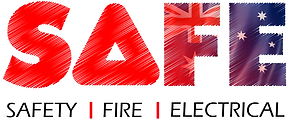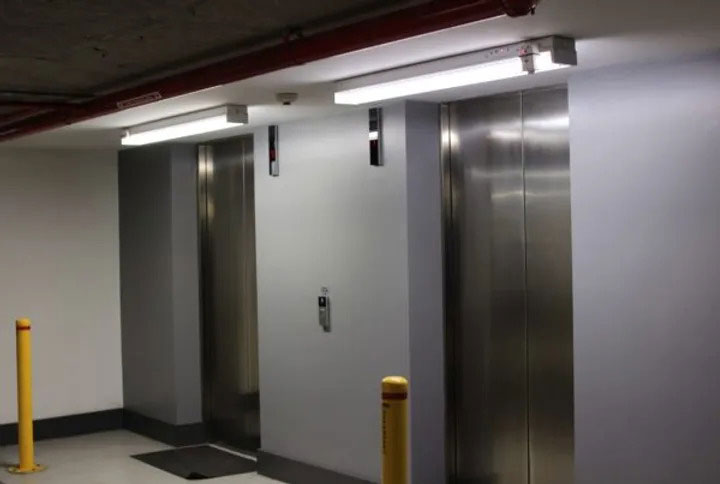When the batteries in a smoke alarm run low, the alarm will begin to beep. This can cause your smoke alarm to make chirping noises even when there is no smoke present. In most cases, replacing the batteries and resetting the smoke alarm will silence the beeping.
All of this is part of routine smoke alarm maintenance.
The fact that your alarm is beeping is a good sign; it means that your device is still functioning properly enough to detect low battery power and notify you that a changeover is required.
The new smoke alarm legislation in Queensland also ensures that all dwellings and rentals are equipped with fully functioning interconnected photoelectric smoke alarms by January 2022. This means that when one alarm gets activated, all alarms will also activate the alarm sounder to make sure you get the warning.
If your smoke alarm is prone to random beeping, you’re in for a serious headache. Hence, you need to learn how to minimise these beeping incidents and how to deal with them.
Aside from low battery issues, here are some other reasons why your smoke alarm continues to sound.
Obstructions
If your smoke alarm continues to beep, you should check the inside of the device for battery obstructions. Sometimes people forget to remove the battery’s “pull tab.” You should also inspect your alarm for debris, insects, and dust. After you’ve finished removing any impediments, then close the battery drawer completely, or in some cases ensure the battery is making contact with the battery monitor microswitch.
End of Life Warning
That annoying smoke alarm chirping could be a sign that you need to replace your device. Most smoke alarms have a 10-year lifespan. Generally smoke alarms in Australia must be replaced every ten years, according to the building code, legislation and manufacturers instructions. Make sure you’re up to date if you’re a landlord or property manager. Your system’s sound will be unique to your device, but it will most likely sound similar to the low battery warning sound for end of life warnings. Each manufacturers smoke alarm will have a unique sequencing code, which will provide a sequence of beeps or indicator light flashes to alert of trouble with the equipment.
If you’re going to replace your smoke alarm, make sure that you buy photoelectric alarms that comply with Australian Standard 3786-2014. You should look for the AS3786-2014 mark in the body of the smoke alarm. It is also imperative that you ensure any alarm installed is compatible with the existing alarms or any other alarms being installed.
Incompatible and Overloaded Devices
It has been found that many contractors have been unaware of the issues created by mixing brands or models from varying types of alarms/manufacturers; this action can cause nuisance/unwanted alarms to occur due to incompatibility, and in some cases it has also prevented alarms from functioning altogether.
Another common cause for nuisance/unwanted alarms is systems being overloaded or incorrectly designed. Each manufacturer has specific requirements for the total number of alarms allowed on dedicated or mixed electrical circuits. The manufacturer’s specifications must always be followed to ensure safe operation and maintenance.
Dirty or Contaminated Device
When dust gets inside your alarm, it can cause the internal sensors to malfunction. Any debris on the device’s exterior can confuse the external sensors. Cleaning the inside and outside of your alarms on a regular basis is the best way to avoid false alarms. This can be accomplished with a vacuum cleaner, duster, or paint brush.
You can clean your device while also determining its location. You should think about moving your smoke alarm to a location where it will encounter less debris, especially if you are encountering unwanted/false alarms on a regular basis.
Another common problem that may cause nuisance alarms is contamination of the smoke sensing chamber, which can be caused by the use of artificial smoke used to test the smoke alarm. Each manufacturer will have test and maintenance instructions for each model of alarms, which will detail the specific method and equipment required to test the alarm. Using alternative methods may contaminate the alarm and make it inoperable.
It Needs to be Reset
Even after you’ve replaced the batteries in your alarm, it may continue to beep. When this happens, you’ll need to know how to reset smoke alarms. It may be a little difficult – the method you use to reset your device will be determined by the make and model of your alarm. Find the reset button on battery-powered smoke alarms and hold it down until the beeping stops. On mains-powered smoke alarms, try the reset button to see if it works. If that doesn’t work, try turning your circuit breaker on and off to see if that stops the alarm.
Why It’s Important to Have Functional Smoke Alarms
Anyone who has ever owned a home or business where constant, unexplained smoke alarm beeping is a regular problem understands how inconvenient it can be.
Strict legislation has been passed in Australia to ensure that all businesses – including residential properties – comply with stringent fire-safety standards, including the installation and maintenance of functional smoke alarms. Stage 1 of the Smoke alarm legislation in QLD from 1 January 2022 will now apply to all houses leased and sold.
What does this mean?
-If a landlord installs or replaces a smoke alarm, regardless of the age of a dwelling, it must be replaced with a compliant photoelectric smoke alarm and powered by what is currently there (i.e. if they are powered by 240-volt they must be replaced with 240-volt smoke detectors, otherwise they can be powered by 10 year non-removable batteries)
– If a landlord is not compliant by 1 January 2022, they will not be legally able to rent their property.
– Property sellers must continue to lodge a Form 24 stating the requirements of the law have been met.
If you’re currently unable to determine the cause of your random smoke alarm beeping, work to resolve the issue, seek professional assistance, or consider purchasing a replacement.
SAFE can install and maintain any of your fire safety installations to ensure that they are working and compliant with local regulations. Contact SAFE at 1300 50 7233


